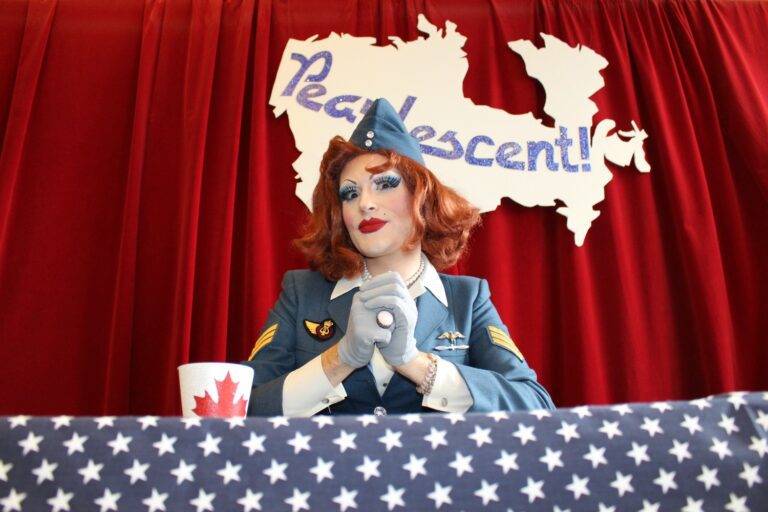Presidential Dress-Up
On the day after her defeat, Hillary Clinton wore one of her signature pantsuits, in charcoal grey with deep purple silk accents.
I wonder how many stylists typically arrange for her next day’s dress. Do they work from algorithms and feedback derived from focus groups? You know, regular voters, real people, the same ones who told her long ago that blondes are really more becoming than brunettes?
On a typical morning, do these stylists lay out a single ensemble for her? Or are options curated from her Pantone collection of powersuits, always tasteful (not too flashy but not too feminine but not too manly).
And on this particular morning, on Wednesday, November 9, did she choose this suit? And if she did, did she pause to regard the accents of violet silk, did her fingers linger on the lapel when she went to pull it from the hanger?
Was this always the suit for Wednesday, November 9? Would she have worn it in victory, too? Or was the three-piece Ralph Lauren, in charcoal grey with purple lapels, bought with this terrible morning in mind?
Ahhh! They cried. Purple, like a mix of red and blue. Such a powerful symbolism: unity after division!
No! They shouted. It’s purple, like one of the original three colours of the suffragists!
Of course not! They sighed. Obviously it’s purple, the colour of penitence in the Methodist tradition. See?! She just quoted scripture!
Don’t be stupid! They sneered, and tweeted. Purple because she took such a bruising LOL.
She’s trying to tell us something, they all thought. Purple…
In the end, it was just as it has always been, from day one of this long and brutal race, and for many decades before that: when the people looked at this woman on the dais, in grey and purple, they saw exactly what—and who—they wanted to see.
* * *
Meanwhile, in Trump Tower, the victor strung a red power-tie around his neck, and tightened it. His own name is stitched into his tie (all of his clothes, actually) in fine gold thread, as if he were a child who might leave something behind on a field trip to Mar-a-Lago.
Were the hands that pulled the needle and gold thread through red silk smaller than his own—a child’s hands? Did they tremble with the effort of the work, or were they practiced and mechanical? And did the man’s fingers tremble, like a child’s, when he tied a double Windsor knot into his red power-tie and considered the consequences of his winning, and winning, and winning? Did he feel—as I’m sure he often does—scared? Does his future frighten him as much as it does me?
Later, as he sat hunched in the White House, his long red tie spilled out from his suit, like a great tongue hanging slack in his head, dumbfounded.
* * *
There’s a thin red trail of blood on my shirt.
I accidentally stuck my finger with a safety pin. It’s pinned to my breast, and I’m wearing it to say, without saying, that it’s okay: I wanted Hillary to win. I’m not a racist, or a sexist. I’m one of the good white people. We didn’t mean for this to happen. Not all of us, anyway.
See, I’m trying to do something meaningful and important with my safety pin. I’m saying ‘You’re safe with me.’
Ignore the blood.
* * *
As a drag performer, it’s impossible not to consider the political implications of every ensemble, because all clothing is a costume, and every costume is a declaration. We dress to attract and to repel, to accentuate the parts we like about ourselves, and to conceal what we think should be hidden.
And suddenly we live in a world where truly deplorable ideas, and ignorance, and anger—things we thought were supposed to be hidden—have become slogans. This alt-right populism (an ironically “PC” term for “white nationalism”) is quickly becoming a brand, and through their clothes their hatred is being seen, and celebrated. They have realized they aren’t as alone as we all thought they were, as we hoped they were.
Clothing is powerful. It can be dangerous. The next time you see a red baseball hat walking your way, will you cross to the opposite side of the street? Is it possible to still see the person wearing that hat, or will you just see a gang colour, a hood, an armband?
* * *
Do you remember what you wore the day after Trump was elected?
As you watched the results trickle in and the electoral map bleed redder and redder, did you have something in mind for your tomorrow? The Weather Network was calling for twelve degrees, clear skies, sun—a beautiful day. Was your outfit chosen for the sunshine, or for the meeting, or for the drinks that came afterwards, to toast the shattering of glass ceilings and demagogues?
And in the morning, did you remember to move your red poppy from yesterday’s jacket onto today’s, to honour what was won by who was lost? On Wednesday, November 9, that red badge pulsed on my body like an open wound, for fear of what unknown battles—and people—may yet be lost.










Comments